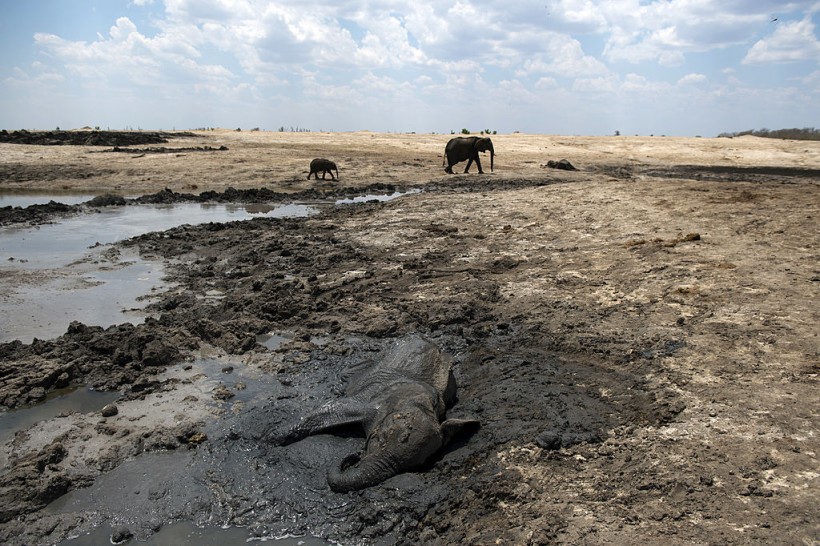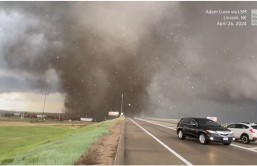Zimbabwe's wildlife officials and conservation organizations are pointing to the recent deaths of at least 100 elephants in the country's biggest national park as a depressing indicator of the effects of climate change and the El Niño phenomena.
Hwange National Park and other areas of the southern African country are bracing for increased temperatures and less rainfall, prompting authorities to issue a death threat warning for more elephants. According to the International Fund for Animal Welfare (IFAW), this situation is a catastrophe for animals.
Nearly 45,000 elephants and over a hundred other kinds of mammals and birds call Hwange their home.

A baby African elephant is stuck in the mud near a stretch of water on November 18, 2012, at Hwange National Park in Zimbabwe.
Impact of El Niño
Tinashe Farawo, a spokeswoman for the Zimbabwe National Parks and Wildlife Management Authority, said: "El Niño is making an already dire situation worse," as reported by NBC News.
Parts of the Pacific become warmer during El Niño, a naturally occurring and recurrent weather phenomenon that influences global weather patterns. Recently, El Niño caused devastating floods in East Africa, but Southern Africa should anticipate below-average rainfall as a result of this weather pattern.
Zimbabwe is already seeing the effects of this since the rainy season started weeks later than normal. Although there has been very little rain recently, most predictions indicate that the summer will be dry and scorching.
Researchers are looking into the possibility that El Niño is becoming stronger due to climate change, which might have far-reaching repercussions. The 2019 drought that killed over 200 elephants in Hwange National Park is something that officials are worried may happen again.
IFAW's Phillip Kuvawoga, who is in charge of landscape programs, expressed concern about the Hwange elephants in a recent investigation, saying that this situation is recurring.
See Also: 2023 Predicted to Be Hottest in 125,000 Years: EU Experts
Demand for Water
A video depicting a young elephant fighting for its life after being caught in a muck in a water hole that had partially dried up in Hwange was released on the social networking site X (previously Twitter) by Farawo.
"The most affected elephants are the young, elderly, and sick that can't travel long distances to find water," he said. An elephant of typical size requires about 200 liters (52 gallons) of water every day, according to him.
To ensure the safety of the elephant corpses and to deter poachers, park guards remove the tusks from deceased animals.
In the past, October was the beginning of Zimbabwe's rainy season, which would continue consistently until March the following year. In recent years, it has become more unpredictable, and environmentalists have noted longer and more intense dry periods.
Trevor Lane, director of the conservation organization The Bhejane Trust and who works with Zimbabwe's parks ministry, warned that the area might see another recurrence of the dry period due to El Niño.
He said that, in collaboration with the parks department, his group has been managing fifty boreholes and pouring 1.5 million liters of water into Hwange's waterholes every day.
Even though there is no big river cutting through the park's 14,500 square kilometers (5,600 square miles), the animals nevertheless get water from a little over a hundred solar-powered boreholes.
See Also: Over 50% of Peru's Glacier Surface Lost Due to Climate Change








